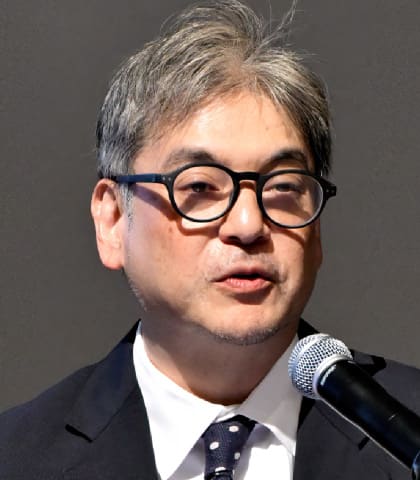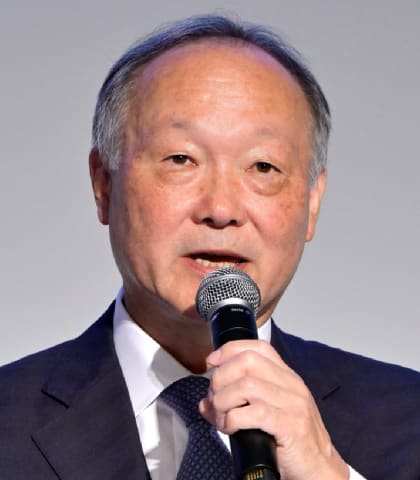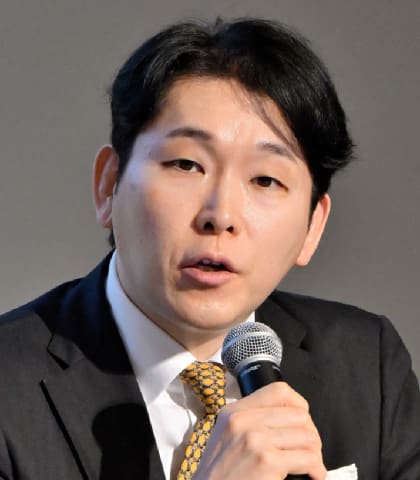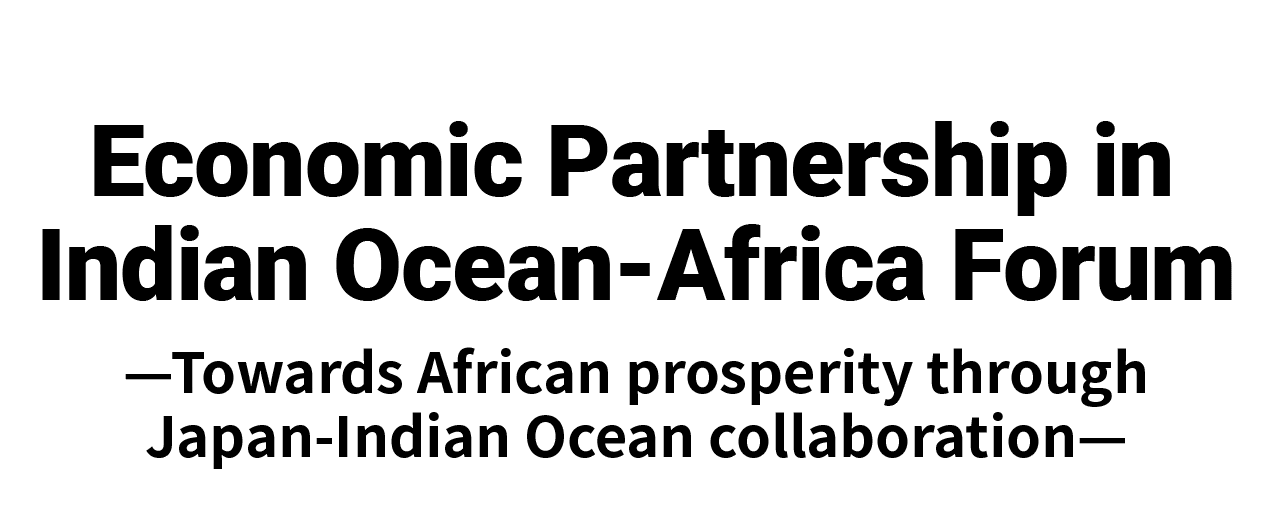Potential of Economic Partnership in Indian Ocean-Africa
<Keynote Speech>
Kazuya Nakajo, Executive Advisor, Japan External Trade Organization (JETRO)
<Panelists>
Toshimitsu Imai, President & CEO, Toyota Tsusho
Toshinobu Shinoda, Representative Director & Executive Vice President Executive Officer, Mitsui O.S.K. Lines
Shunsuke Tsuboi, Representative Director & CEO, Sagri
Katsura Daikuhara, Chief Economist & Managing Director, Head of Country Research and Intelligence, SMBC Bank International
<Moderator>
Akito Tanaka, Editor-in-Chief, Nikkei Asia, Nikkei Inc.

Kazuya Nakajo

Toshimitsu Imai

Toshinobu Shinoda

Shunsuke Tsuboi

Katsura Daikuhara
Focusing on Potential, Not Risk
Kazuya Nakajo of JETRO opened with a keynote speech titled “India-Africa Economic Relations and Collaboration with Third Countries.” He presented data showing that India and Turkey are by far the biggest exporters to Africa, followed by France and China, with the U.S., U.K., and Japan further behind. He added, “India is very knowledgeable about the market. It invests in a wide variety of sectors, primarily in English-speaking regions. Japanese companies are also attempting to enter the market using India as a base, but the small market size and the risks of not recovering investments pose challenges. An effective way to overcome these issues is to partner with a local company, or a company in India or Turkey, or to leverage the power of a startup. The key to success is selecting a credible partner and building trust between top executives.”
The following discussions took place following the keynote speech.
—What is the status of your company’s business activities in Africa?
Imai: Toyota Tsusho is building mobility, green infrastructure, healthcare, and consumer businesses in 54 African countries. Sales have grown to 1.6 trillion yen. The difficulty in Africa is that the market size per country is small. However, by getting into markets early and scaling up business through multi-country development, it’s possible to make profits.
Shinoda: In Africa, it is important to work with reliable partners and utilize the company’s strengths to grow your business. With this approach, we are running a business in Mozambique and Senegal that supplies electricity from the sea using floating power-generating ships. We will also be working on on-site logistics for infrastructure and energy projects, construction logistics, and other ventures. In the area of conventional marine transport, our automobile shipping business to Africa is growing particularly well.
Tsuboi: We are engaged in a business that uses satellite data and AI for visualizing the state of farmland worldwide. Organizations equivalent to JA (Japan Agricultural Cooperatives) can use the data we supply to provide farming guidance based on soil conditions and land usage. In exchange, we receive information about farmers. We can then utilize the information as credit data for microfinancing. In another recent challenge, we’ve been trying to convert greenhouse gas reductions achieved by increasing the fertilizer efficiency of farmland into carbon credits.
—How do you view Africa from a macroeconomic perspective?
Daikuhara: The total population of Africa is 1.4 billion, the same as India’s, accounting for 18.1% of the world population. However, Africa’s GDP is only US$2.8 trillion, representing just 2.5% of global GDP. Many African countries rely heavily on the export of primary commodities, making their economies vulnerable to external demand fluctuations. Furthermore, with 85% of employment in the informal sector, fiscal fragility and rising debt ratios remain persistent concerns. Against this backdrop, Africa’s urban population is projected to reach 1.4 billion by 2050, with 18 megacities exceeding 10 million inhabitants. Providing the infrastructure required to sustain rapid urbanization poses a significant challenge, particularly in terms of electricity supply. As food production fails to keep pace with population growth, African countries spend 16% of their export earnings on food imports. This contributes to a shortage of foreign currency needed to finance investment and import capital goods essential for industrialization. Adapting to climate change and developing human capital are also critical challenges.
—Although Africa is considered the “last frontier,” a dispassionate look at the data reveals a situation that does not necessarily offer much optimism.
Imai: By 2050, Africa’s total population will be 2.5 billion, meaning that one in every four people on the planet will be African. Despite the enormous potential this presents to them, many Japanese companies are hesitant to take up the challenge. That is the reality. However, there is a common saying in Africa: hakuna matata. Literally translated, this Swahili expression means “no problem.” Standing back and doing nothing out of fear of risk can never lead to success. So, the mindset of hakuna matata is important.
Shinoda: Stretching 7,000 to 8,000 km east to west, and north to south, Africa is as huge as an ocean. There is clearly a vast potential for the deployment of systems to ensure a stable supply of essential products and services. In the long term, if internal demand continues to grow, a massive economic zone will emerge in Africa. This too represents a big opportunity.
Tsuboi: Japan, India, and Africa have some similarities in terms of farm size and farming environments. These days, farmland data is created by training AI, but training data on the huge farm sizes of countries like the U.S. is not very useful for Africa. On the other hand, training data from India, which has similar farmland environments, can be useful in Africa. We want to create economic zones centered on farmland. With its enormous population, Africa offers great potential in agriculture.
—What opportunities do you see in the economic region that includes the Indian Ocean?
Imai: The combined population of the regions surrounding the Indian Ocean from Southeast Asia and India to the Middle East and Africa, is over 4 billion. There is no doubt that the center of global economic growth will shift to this Indian Ocean-Africa region, where the population is most concentrated. Sooner or later, huge supply chains are likely to arise here.
Shinoda: I agree. I expect to see the focus of the shipping industry shift increasingly to trade around the Indian Ocean.
Tsuboi: Japan is a country that is ahead of the curve on many issues. I think that solutions developed in Japan will shift horizontally from Southeast Asia to India and Africa. The time zone difference with Africa is a challenge when delivering Japanese solutions to Africa. However, the time difference from India is only half as much. That’s why Japanese companies will increasingly manage their African businesses from India.
Daikuhara: It is important to promote import substitution and infrastructure development, to support the effective realization of the African Continental Free Trade Area (AfCFTA). India’s gradual, endogenous, bottom-up development provides a useful model for Africa’s industrialization. If Japan offers locally aligned support and accelerates progress on the Asia-Africa Growth Corridor (AAGC) across the Indian Ocean, significant opportunities could emerge.



